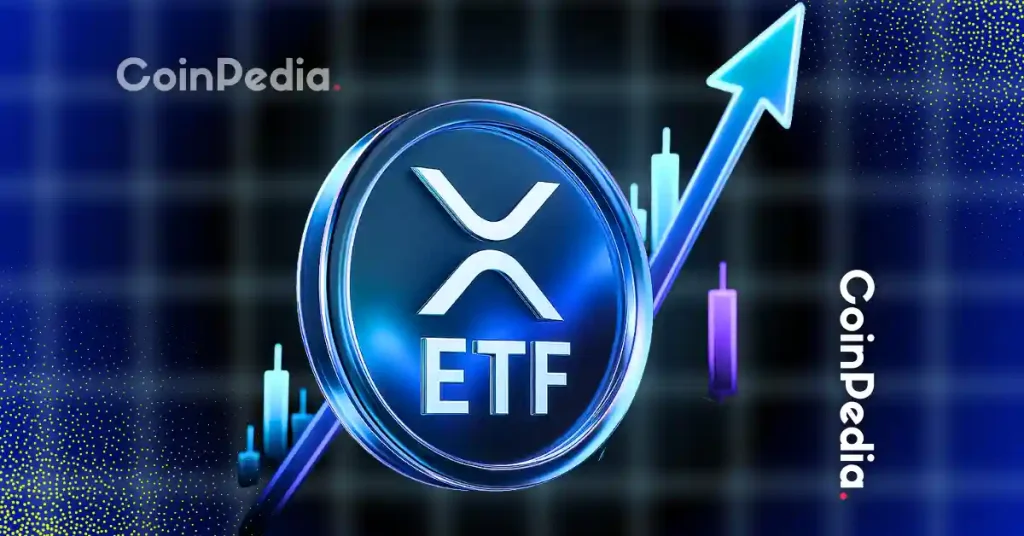XRP Price Prediction: Res-Osprey Spot ETF Launch on September 18 Set to Ignite Rally
XRP's moment of truth arrives September 18 as the Res-Osprey Spot ETF goes live—and the market's betting big on a seismic shift.
The ETF Effect: Liquidity Onslaught
Traditional finance finally gets its XRP gateway. This isn't just another product launch—it's institutional validation that'll flood the market with unprecedented liquidity. Wall Street's playing catch-up, and they're bringing checkbooks.
Price Trajectory: Breaking Resistance
Expect immediate volatility as pent-up demand meets new capital inflows. Key resistance levels could shatter within hours of trading—remember what happened with Bitcoin ETFs? History doesn't repeat, but it sure rhymes.
Market Dynamics: The Institutional Factor
Pension funds, wealth managers, and retail investors now get regulated exposure without self-custody headaches. The compliance crowd gets their paperwork while crypto natives get their moon potential—everyone wins except the skeptics watching from sidelines.
The Cynical Take: Because Finance
Let's be real—Wall Street only embraces innovation after extracting enough fees to make a loan shark blush. But hey, if it pumps your bags, who cares about their profit margins?
September 18 changes everything. Or it doesn't. Either way, grab your charts and watch the show.

The long-awaited Rex-Osprey spot XRP ETF will debut on September 18, 2025, after the U.S. Securities and Exchange Commission (SEC) delayed its original launch by six days. This will be the first time an XRP-linked exchange-traded fund trades in the United States under the Investment Company Act of 1940.
Unlike futures-based products, the Rex-Osprey ETF is designed to give investors regulated exposure to XRP through traditional brokerages. However, the product is structured as a hybrid. The fund itself will not hold XRP directly but will rely on third-party custodians to manage XRP or related instruments on its behalf.
XRP Price Outlook After September 18
At the time of writing, XRP trades at $3.10, holding steady alongside Bitcoin and other altcoins. Analysts say that a daily close above $3.40 could set the stage for a breakout, with $4.50 marked as the next major resistance level.
Descending Triangle: Bearish Pattern With a Twist
XRP’s price chart currently shows a descending triangle, a pattern that historically breaks down 54% of the time. Typically, this signals weakness.
However, because XRP is in an uptrend, the triangle could instead act as a continuation pattern, increasing the odds of a bullish breakout.
Short-Term Price Targets
- $3.60 – conservative breakout target
- $3.81 – extended move aligning with past price confluence
Both levels are seen as achievable within 30 to 60 days, especially with September catalysts in play.
Bigger Catalysts Ahead in October
While the Rex-Osprey ETF marks an important event, the bigger impact may come in October, when heavyweight asset managers like Franklin Templeton and WisdomTree are expected to receive approvals for their own spot XRP ETFs.
These firms manage trillions of dollars globally, and their products could bring XRP to a much wider pool of institutional investors than the Rex-Osprey hybrid fund.
Macro Factors: Fed Rate Cuts and ETF Launch
The Federal Reserve’s September 17 meeting is another event. Markets expect a rate cut, which could trigger short-term volatility across risk assets. Analysts warn of sharp moves or “red wicks” as Leveraged positions reset, but this could pave the way for bullish momentum in the days that follow.
Just 24 hours later, on September 18, the Rex-Osprey ETF will launch. While inflows may be smaller compared to upcoming institutional offerings, the launch is still viewed as a confidence boost for XRP.
Why the Hybrid Label Matters
True spot ETFs, like those expected soon from Grayscale, Bitwise, 21Shares, and Franklin Templeton, will require issuers to hold the underlying XRP directly. This creates a clear and direct LINK between investor demand and XRP’s market price.
By contrast, Rex-Osprey’s hybrid structure relies on third-party arrangements. This raises uncertainty over whether investor inflows will translate into big XRP purchases, limiting its market impact.

